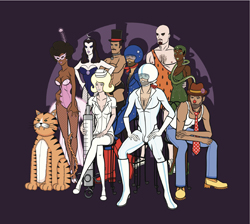Art supporting sexual diversity
Art has always been used to communicate controversial, sensitive or non-mainstream issues to the public, be they war, death, politics or sexuality, often prompting positive democratic change in the world. While the integration of lesbian, gay, bisexual, transgender and queer (LGBTQ) individuals in society is rightfully a non-issue in western Europe, some parts of the continent are still lagging behind. The EU-funded project EU SEXUAL DIVERSITY looked at LGBTQ rights and art across the EU. It focused in particular on Poland and the United Kingdom, analysing their LGBTQ communities' artistic and visual expressions and how such art could bring about democratic transition. To achieve its aims, the project team analysed publications from the social and legal sciences, as well as from LGBTQ studies. It interviewed and consulted academics, artists, curators, politicians and activists, in addition to organising debates and events that involved stakeholders from various European countries. After completing the in-depth comparative analysis of LGBTQ art in both countries, researchers noted that Poland lags behind progress in the United Kingdom on overall LGBTQ rights. Interestingly, however, while Polish lawmakers have refused to legalise LGBTQ civil unions, art in sexual diversity in the country is thriving, playing an important role in social debates and controversies. On the other hand, LGBTQ art and visual culture in the United Kingdom tend to be marginalised and neglected, having migrated to special interest zones and market niches without palpably contributing to social discussion or change. It would seem that the age of LGBTQ art in the United Kingdom has waned now that there isn't an urgent need to fight for LGBTQ rights anymore. Despite these stark differences, there are some common elements in LGBTQ rights and discourses in the two countries. These include persistence of homophobia in some circles, cunning art censorship strategies, religious controversy or oppression, and strong political party differences on the issue. Project results are relevant for art and cultural institutions and museums that encourage social and political outreach, espousing more democratic, critical and inclusive concepts. Project findings are also useful for political and civil bodies that work on human rights based on gender and sexuality through cultural and visual communication. Overall, the research showed how contemporary art and visual culture are pivotal in building the culture and ethics of gender and sexual equality, supporting the EU's anti-discriminatory and democratic ideals. As with the Polish example, art has the potential to change attitudes and promote equality. More such art and culture representation in the rest of Europe is bound to help foster understanding and bring about positive change.

